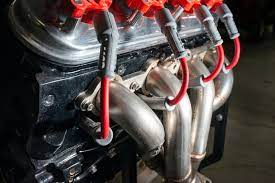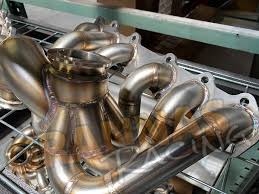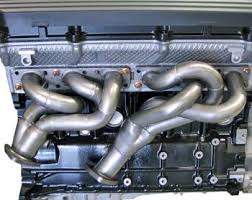How to clean head without removing exhaust valves
Author: SPELAB Mechanical Engineer (focusing on car modification for 10 years)
There are numerous techniques to clean exhaust valves and get the best results. However, cleaning exhaust valves is always stressful. Perhaps you've tried a variety of techniques but always end up cleaning the valves with the head still on. In addition, it might be exceedingly challenging to clean the exhaust valves when the car is in motion.There are frequently numerous deposits in the fuel systems of cars, and they almost always build quite quickly. The pace at which these deposits enter the fuel systems of these cars varies depending on a number of circumstances, some of which include:
- how the car is operated while being driven;
- the type of engine powering the vehicle;
- the vehicle's affinity for oil;
- the kind of fuel that such a car uses.
What do car headers do?
Although headers are intended to carry exhaust gases from the engine to the exhaust system, they do so with less exhaust backpressure than exhaust manifolds, which gives the engine more breathing room.
What is an Exhaust Valve?
An exhaust valve is a mechanism that opens and closes the exhaust manifold in the engine's head. The exhaust valve, which is typically larger than the intake valve, always closes at the start of every induction stroke.
This is because it's considerably more difficult to get fuel and air into the combustion chamber than to get exhaust out of the cylinder.
Exhaust valves are often found at the cylinder head and are connected to internal combustion engines. The exhaust valve aids in the removal of the gasses from the engine after the mixing of fuel and air has happened in the gas cylinder.
How can carbon buildup on valves be removed?
Since the engine valves' carbon deposits limit airflow, the operating temperature rises, resulting in engine damage. Valves must therefore be cleaned for improved performance.
Therefore, I will share with you how to quickly remove the head without damaging the valves.
Step 1: Preparation: gloves and glasses as protection
Safety must be ensured, and while doing so, the valve must be cleaned without removing the head. On the operating engine, we employ the valve cleaner. Therefore, it would be ideal if you took precautions to avoid burning. Additionally, the fluid could get in your eyes, necessitating the use of glasses while cleaning the valve. I used to suffer numerous wounds and burns when cleaning before I had these protective clothes. In light of my personal experience, I want to emphasize the need to wear safety equipment when engaging in these activities.
Step 2: Achieve operating temperature for your engine.
If you wish to clean a valve without removing the head, your engine must be at working temperature. First, start the engine, then check the temperature on the dashboard using the temperature gauge. Additionally, if the temperature gauge reads between cold and hot, your engine is likely running at working temperature.
Step 3: Remove the air filter's cover:
The air filter's plastic cover must be taken off to reach the MAF sensor. The duct from the front of the car enters the engine where the air filter cover is located close to it. Additionally, unfasten the hose clamps on both sides and take out the wing nuts to remove the air filter outdoors. However, wing nuts might not always be present. If necessary, you can also clean or replace the air filters. But because new air filters are not too expensive, I believe it would be best if you replaced the old ones.
NOTE: After opening, save all loose pieces safely because you will later need to resemble an air filter cover.
Step 4: MAF Sensor
I believe it is crucial to ascertain the MAF sensor's precise location because you will need to spray valve intake cleaner past it. The MAF sensor may also be located between the airbox and the throttle body.
Step 5: Rev the engine to 2,000RPM
I like to restart my car's engine at around 2000 RPM whenever I clean the valve. Once your engine is running, the combustion process will accelerate. But I think it would be great if you had someone behind the wheel to help you and rev the engine as needed.
Step 6: Spray valve cleaner
Always paying attention as you spray the cleaner will help. It is the most important stage since cleaning agents must be sprayed behind the MAF sensor, not in front of it. On the other hand, if you spray the cleaner in front of the MAF sensor, a dashboard engine light will be on.
Hooker Headers & Exhaust Systems
The Hooker Super Competition & Competition Headers, Hooker Mufflers, and Cat-back Exhaust Systems are the most comprehensive line of headers and mufflers available today. Hooker Headers and mufflers are full systems that are also specifically made to deliver maximum power at a non-max price. This indicates that Hooker items are created intelligently rather than cheaply.
Hooker makes parts that enable engines to perform to their greatest capacity using the highest quality steel and welds available. Every Hooker component is rigorously tested to guarantee it lives up to expectations for performance.
Final words
We have now covered how to clean valves without taking the head off. Finding the MAF sensor and removing the filter cover are only two simple steps in this cleaning process. Next, turn your engine to 2500 RPM and cautiously spray cleaner. Additionally, run your engine idly at no more than 3500 RPM before reassembling the components after cleaning. To prevent long-term harm, applying an appropriate chemical throughout the cleaning procedure is vital.










